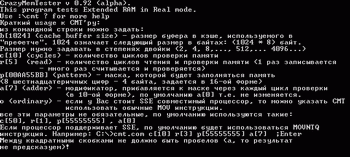Cache Burst 32

Tum Cache increase burst performance on both partitions? TN-FD-32: Enhancing SSDs With Momentum Cache Revision History PDF: 09005aef864d29a6. AXI burst length and burst size of L2 Cache. If you need to transfer 256 bits over a 32-bit bus then you will get 8 beats of 32 bits each. Cache line accesses.

• • • • • • • • A pipeline burst cache is a or storage area for a computer that is designed to be read from or written to in a succession of four data transfers (or s) in which later bursts can start to flow or transfer before the first burst has arrived at the processor. A pipeline burst cache is often used for the static RAM () that serves as the cache in a computer. It was introduced in 1996 with Intel's series of processors. A pipeline burst cache is an alternative to an asynchronous cache or a synchronous burst cache. 8 Steps to Expanding and Replacing Your Disk Arrays Regardless of how high performing your storage array or how well you manage your data, every system comes to a breaking point. Whether it’s long app loading times, or realizing after a disaster that your data isn't quite as available as you thought, when you reach that point, you’ll need to be ready to expand or replace your existing disk array.
In this guide, learn 8 things to take into consideration for when that time comes; it could be closer than you think. Start Download. In most personal computer processors, data is transferred along a path (or ) that is 64 bits (8 bytes) wide. Since each line of storage in a cache is 32 bytes long, it takes four successive transfers to transfer the storage line.
With a pipeline burst cache, the first transfer takes 3 of the processor's cycles, and the remaining three transfers take only one cycle each (since no time is required to locate the storage location for the remaining transfers). The adjectives and describe the idea that once the storage location has been addressed and accessed and the first read or write transfer is started, the subsequent transfers come rapidly in discrete bursts down (or up) the pipe or data path.